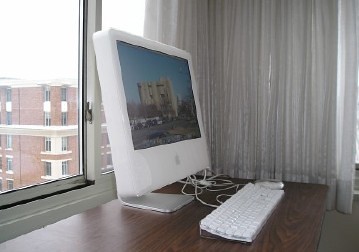Wireless networking may be the latest trend, but anyone with experience knows most wi-fi networks cannot beat the speed and reliability of a wired connection. The problems with wi-fi, such as connection lag and downtime, are not inherent to it. Rather, problems are caused by a combination of human error in setting up the network and lack of compatibility between different brands of components.
Fixing poor signals should not take much effort. Matching the proper components tends to be the most expensive way to fix problems, but it is also highly effective. Consider these tricks to maximizing your Wi-Fi networks reliability and speed before making the switch back to the cumbersome wired network.
Positioning the Signal
Wireless signals do not require line of sight for access, but there are several factors that will weaken the signal and connection of other computers on the network. You should also be aware, the signal has a limited range even without obstacles. Determine where the computers in the home will be located, and place the router or access point between them. For two-story homes with a router on the first, use a high shelf for placement.
Walls, floors and metal objects, such as a filing cabinet, will cause signal problems. Avoid placing the router in a corner, near the floor, or on anything metal. Another common cause of interference are normal items in the home transmitting on the same 2.4 gigahertz wavelength as the still common 802.11g routers. Repositioning the router won't help with this problem, but replacing the 2.4 gigahertz cordless phone might improve the signal.
Boosting the Signal
Moving the router is not always a possibility. You can still get a stronger signal, if the antenna is positioned on a filing cabinet in the corner of two outside walls. Standard antennae project an equally strong signal in all directions, but a high-gain antenna will direct all signal strength in one direction. Most routers have a removable antenna to make changing to a high-gain antenna easy. Other types will require replacement of the router itself.
Another signal boosting measure is employed heavily by the broadband industry. Wireless repeaters are fairly inexpensive and can be used to extend your range in bad circumstances. The repeater placed halfway between the router and destination computer will simply catch the signal and repeat it at the original strength. The same rules for positioning apply to repeaters.
Choosing Components for Compatibility
Industry standards make it possible to use components from different manufacturers together. It may make sense to do so when only considering the upfront cost of components. However, significant boosts in speed are often possible by using components from the same company. A good example is the Speedbooster technology only available when combining a Linksys router with network adapter.
Changing the Channel
Much like a radio station signal is muddied on one setting and clear with the next, changing your router's channel can provide signal clarity. This is easy to check by experimenting on your router's configuration page. Each manufacturer has a default address for accomplishing this.
Another step for those serious about getting a Wi-Fi network up to par with wired systems is to investigate upgrades. Improvements in hardware and drivers are constantly being made, and the new wireless-N technology promises better signals than ever. For now, it is possible to see significant boosts in performance without upgrades.
Amy Benders is a computer and electronics writer and blogger for several web sites. She writes for http://www.wirelessinternet.org/3G-network.php where you can find out more about Wifi speed.






























.jpg)













































